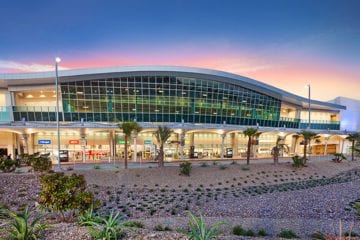Ministry of Economy, Government of Fiji
CLIENT OVERVIEW
The Ministry of Economy plays a leading role in ensuring that funds allocated for capital development and rehabilitation works are monitored, accounted for, and properly utilized. Ministry of Economy carries out appraisals for capital projects submitted by various ministries and departments before these projects are allocated funding in any financial year.
The Construction Implementation Unit (CIU) within the Ministry of Economy was established with the sole purpose of planning, delivering, and maintaining all the assets of the ministry, either owned by Ministry of Economy or delivered for other ministries or agencies. This includes schools, hospitals, government buildings (Parliament, President House, etc.) service stations (Police, Army, Fire, etc.), government quarters, government warehouses, and so on. The CIU also manages the leases of all the buildings occupied by government agencies and government buildings that are rented out to private entities.
CHALLENGE
The need to form such a unit within the Ministry of Economy arose when the island nation was hit by tropical cyclone Winston (TC Winston), the most intense and costly tropical cyclone in the South Pacific basin. Before TC Winston, all government projects and assets were managed by individual departments and agencies. However, as the sole authority of all project funding, the Ministry of Economy struggled to assess the full extent of the damage caused by the storm due to a lack of central asset repository, information on the ongoing or planned projects, and the resources involved in each project execution or asset management.
SOLUTION
That experience forced the Ministry of Economy to adopt an asset-centric approach for all their capital works and decided to procure a system that enables them to not only provide comprehensive Project Management functionality but also to keep track of three key components:
- All Programs and Projects (Planned, being delivered, or delivered)
- All Assets
- Relationship between the assets, projects, funds, and resources
The Ministry of Economy found the PMWeb proposal in line with their requirements. PMWeb was installed to the Ministry of Economy’s servers in December 2018. The implementation started in January 2019; and the solution went live in June 2019.
CIU decided that any ongoing project should be linked to the asset that the project is delivering. All existing assets should be linked to any new projects that have a direct impact on the asset. The CIU built an extensive repository of all current assets; and where applicable the asset repository was extended down to the equipment level, for example, AC no. 3 in the east wing of the 5th floor in the building A located in the district of Suva. This enables CIU to keep track and monitor:
- Project tracking by asset type/category, location, equipment type, affected ministries or agencies, etc.
- Cost tracking by asset type/category ministries or agencies, project type/category/status, location, construction type, funding source, etc.
- Project pipeline monitoring by asset type/category, location, etc.
- The lifetime cost of an asset includes original asset delivering cost, running cost, and upgrade/maintenance cost.
RESULTS AND BENEFIT
CIU conducts periodic facility inspections to assess the condition of the existing asset or of a proposed asset. Such inspection includes the lowest element of the asset hierarchy like the foundation of the building, services related to an asset, requirement of a new or proposed asset, or equipment available/required within an asset. An extensive custom form was developed to enable CIU to record the inspection finding live, which also enables them to do an estimate of each inspection element. Custom-built reports allow CIU to determine
- Overall condition of an asset
- The extent of damage and the cause of the damage (Natural, accident)
- Long- and short-term cost of damage repair or upgrade
- Probable effect on delay for the damage repair or upgrade
- Likely cost of a proposed asset
- Space to occupant ratio
- Likely Cost per m2, asset type, location, etc.
- Effect of the asset (existing and new) on the local community.
This has become the key project planning tool for CIU and the Ministry of Economy. The tool enables them to estimate the cost of a new project and thus provides them with the key information for their yearly funding and budget planning activities. This also acts as the project prioritization tool for the Ministry of Economy. As a result, all project-related activities within CIU now starts from the asset. Condition of a new asset or benefit of a new asset now plays a key role in funding allocation for new projects and budget planning.
As mentioned earlier, CIU also manages the leases of all the quarters and office buildings. The leases can include complex leasing structures: a mixture of a commercial lease, free rent, market rent, and salary sacrifice. Lease management is also a key part of the asset management activities. This includes:
- Issuing and managing lease invoices
- Tracking of arrears and informing relevant ministries
- Work request and work order management utilizing a dispatch board
- Cost tracking of asset maintenance that ultimately provides information for asset’s lifetime cost
With PMWeb’s powerful custom form, reporting, and out-of-the-box cost and planning tools, this has become the central tool for all of CIU and the Ministry of Economy’s project activities, now entirely asset-centric. This model has been hailed as a pioneering model in Fiji, and other organizations are now keen on adopting such a framework, including universities and local government authorities.
PMWEB MODULES
- Core Module with Business Intelligence, Reporting, Security
- Planning, Prioritization, Estimating, Online Bidding
- Cost/Contracts, Project Management, Forms, Budgets, Funding
- Visual Workflow
- Scheduling
- Asset Management
PMWEB TOOLS
- Document Manager
- Custom Form Builder
- LDAP or SAML for AD
- Basic User Pool



